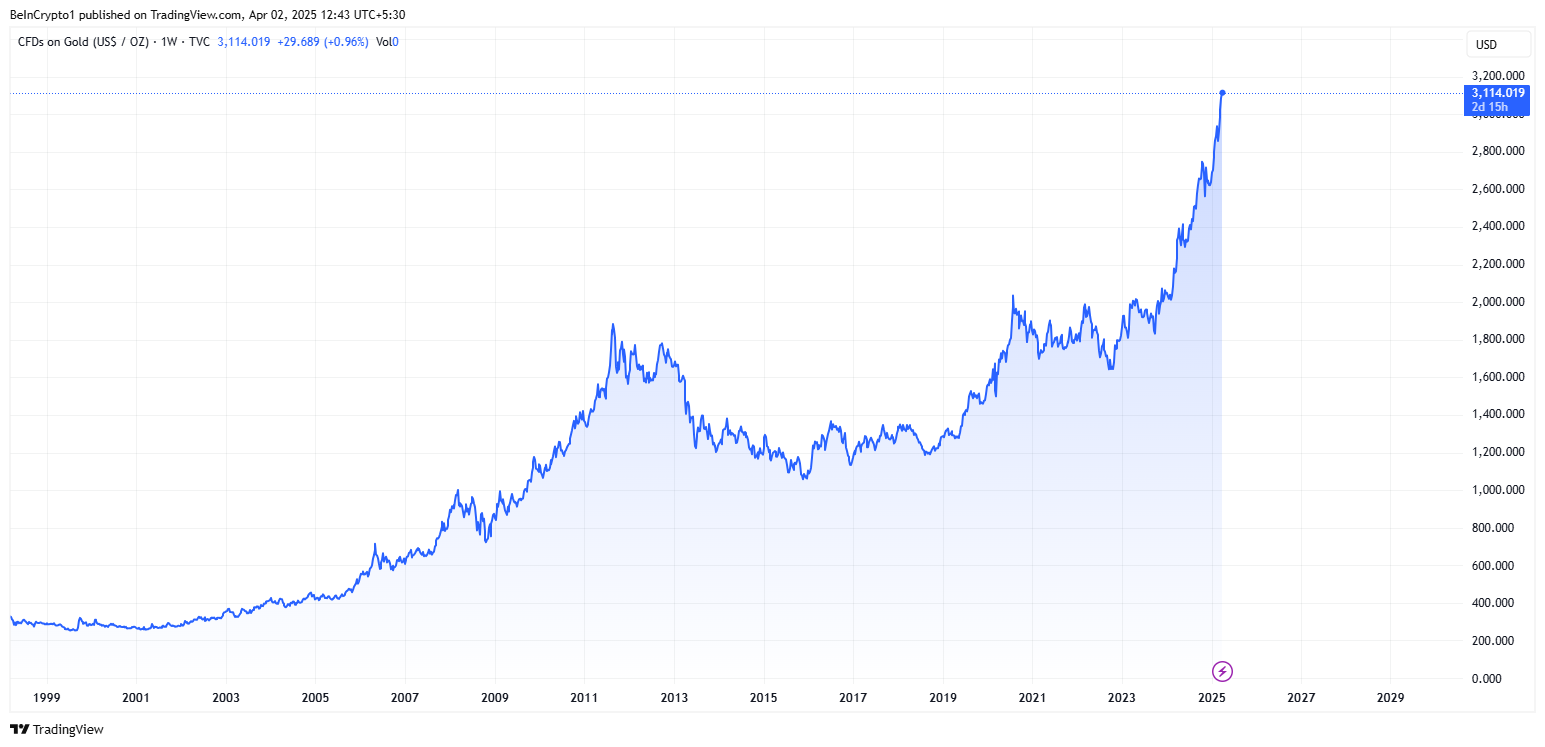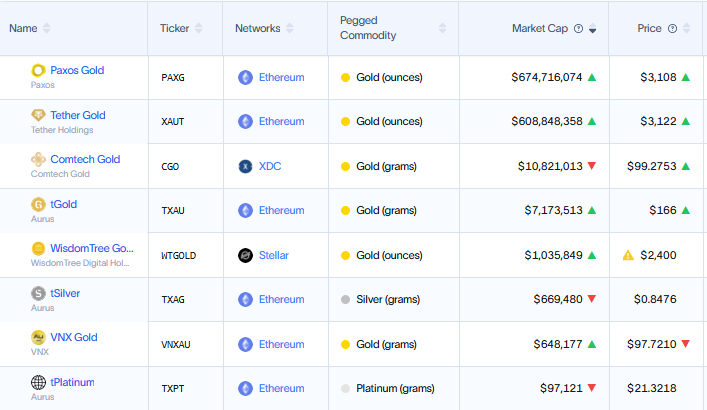-
Tokenized gold has seen a market cap surpassing $1.2 billion, a trend buoyed by increasing gold prices and the rapid adoption of blockchain technology.
-
Experts, including blockchain veteran Don Tapscott, predict that tokenized gold could significantly disrupt the $13 trillion gold market by introducing enhanced transparency and liquidity.
-
Countries like the US are considering tokenizing their gold reserves, while initiatives in China and Russia could lead to the creation of gold-backed stablecoins aimed at challenging USD’s hegemony.
Tokenized gold market cap has exceeded $1.2 billion, driven by soaring prices and blockchain adoption, prompting nations to explore gold-backed stablecoins.
Gold Meets Blockchain Amid Tokenization Revolution
With gold prices soaring past historic highs of $3,000 per ounce, digital assets such as Tether Gold (XAUT) and Paxos Gold (PAXG) are gaining traction in the investment landscape.

The surge in prices has drawn attention to tokenized gold as a modern alternative to traditional investment in precious metals. As Don Tapscott, co-founder of the Blockchain Research Institute, points out, this shift could redefine the $13 trillion gold market.
Questioning the continued reliance on physical gold storage methods unchanged since the 1800s, Tapscott advocates for the transformation of gold’s role in finance through blockchain technology. He argues that such innovation can significantly enhance transparency, liquidity, and the introduction of new financial models.
“The US government could even tokenize its gold reserves, tracking them immutably and potentially utilizing them in innovative ways,” Tapscott suggests.
This approach could enable fractional ownership and greater accessibility for a wider range of investors globally. Current market leaders in tokenized gold include Paxos, boasting a 51.74% market share, followed closely by Tether with a 46.69% share.

Innovations are also on the horizon, with companies like Matador Technologies pioneering a method for tokenizing gold on the Bitcoin blockchain, enabling investors to hold digital claims on both physical gold and exclusive digital art.
“We believe that the next generation of financial powerhouses will likely emerge from the tokenization revolution. It’s still early, and the playing field is wide open. Matador and others have the bull by the horns,” Tapscott noted in a recent article.
Gold Tokenization in the US: A Bold Policy Shift?
The surge in interest surrounding tokenized gold has prompted the US government to take notice. Following President Trump’s March 5 executive order to establish a Strategic Bitcoin Reserve (SBR), policymakers are re-evaluating the modernization of the nation’s gold holdings.
Treasury Secretary Scott Bessent has indicated a shift towards “monetizing assets,” which raises speculation about the potential tokenization of the gold reserves held in Fort Knox.
“US Treasury Secretary Scott Bessent says, all the GOLD is there. He has no plans to visit Fort Knox or to revalue GOLD reserves in a sovereign wealth fund,” remarked Erik Yeung during an interview on “Bloomberg Surveillance.”
Additionally, Senator Cynthia Lummis has raised the idea of swapping portions of the US government’s gold reserves for Bitcoin, especially considering that current gold reserves are recorded at a long-standing book value of $42 per ounce—ignoring the contemporary market value that exceeds $3,000 per ounce.
While the US grapples with tokenization, geopolitical adversaries such as China and Russia are contemplating more aggressive moves, including the introduction of gold-backed stablecoins. Bitcoin advocate Max Keiser has pointed out that BRICS countries are likely to pursue this route as a countermeasure to the US’s USD-backed assets.
“The BRICS, principally Russia, China, and India, plan to introduce a gold-backed stablecoin to counter any attempt by the US to introduce a hegemonic USD-backed coin,” Keiser stated, emphasizing the inflation-proof nature of gold compared to the dollar.
Gold vs. Bitcoin: The Safe Haven Debate Intensifies
The recent rally in gold prices has reignited discussions regarding its status as a safe-haven asset in comparison to Bitcoin. Some analysts are optimistic that Bitcoin may eventually mirror gold’s upward trajectory.
Despite this, during times of economic uncertainty and potential rising tariff policies under President Trump, gold continues to be viewed as the safer investment, historically known as a reliable store of value.
The ongoing rise of tokenized gold further illuminates the merging paths of traditional and digital finance. As financial markets evolve and more investors seek to diversify their portfolios, it seems likely that both gold and Bitcoin will find their places in the modern economic landscape.
Whether through advances in tokenization or the advent of government-supported blockchain initiatives, the financial paradigm is shifting, positioning gold and Bitcoin as pivotal components in tomorrow’s asset markets.
Conclusion
As the financial landscape evolves, the emergence of tokenized gold presents exciting opportunities and challenges. The intersection of traditional assets like gold with innovative technologies like blockchain could redefine investment strategies and government policies alike. With prospects for an increasingly integrated financial system, stakeholders must remain vigilant and adaptable as these developments unfold.
